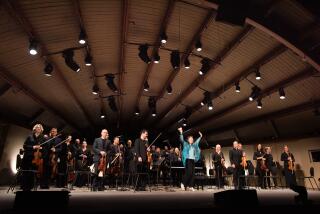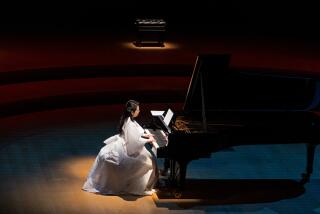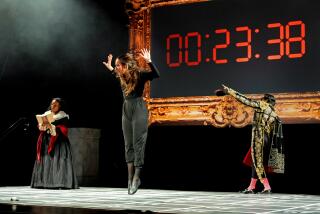Spare but passionate composer portraits
- Share via
Tuesday in Zipper Hall, John Cage’s slow, minimal solo piano piece “Winter Music” provided an almost surreal contrast to George W. Bush’s State of the Union address. At the least, the balm of the Cage, with its peaceable indeterminacy, provided an escape route from the determined war talk.
Although an installment in Southwest Chamber Music’s adventurous “Composer Portrait Series: New Music in the 21st Century,” this program broke the mold by restricting itself to the long, unusual works of Cage and the late Italian composer Luigi Nono, heroes of the last century.
Musical forces were spare and, in their own way, smartly impassioned throughout. Gayle Blankenburg patiently issued the carefully articulated, shard-like chords and tones, and savored the breathing silences of the Cage, which is based on the “I Ching.” Hypnotic, slow-mo music, “Winter Music” conveys a sense of an enlightened and malleable continuum rather than defining structure.
For Nono’s hourlong “La lontananza nostalgica utopica futura,” originally written for Gidon Kremer, violinist Mark Menzies wandered to different stations on stage and in the hall, playing abstract modules based on notes filched from Verdi’s “Four Sacred Pieces,” radically rewired. The unseen factor was Christopher Burns, tweaking live electronics in the booth, distributing violin fragments around multiple overhead speakers. Whether his role signifies divine intervention or the seamless and ubiquitous role of technology beneath modern life -- the doomed utopian ideal -- was an open question. An added attraction was a heightened awareness of the venue itself.
Although different in character and end effects, the works shared the common goal of toying with the listening and concertizing process. The result was coolly tranquil but never inert.
More to Read
The biggest entertainment stories
Get our big stories about Hollywood, film, television, music, arts, culture and more right in your inbox as soon as they publish.
You may occasionally receive promotional content from the Los Angeles Times.










